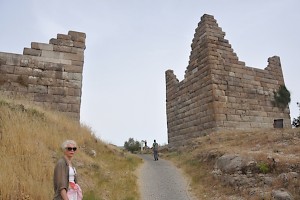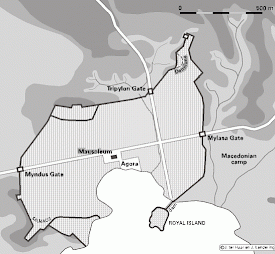Halicarnassus (334 BCE)
Q28933Halicarnassus (Greek Ἁλικαρνασσός): Greek-Carian city, modern Bodrum in southwestern Turkey.

Halicarnassus (modern Bodrum) had been fortified in the mid-fourth century by the satrap of Caria, Maussolus. When Alexander the Great tried to capture the town in the autumn of 334, it turned out to be a very difficult siege because the walls were in excellent condition, and prepared for a war with catapults - a recent invention.
Besides, the Persian garrison was commanded by an excellent general, the Greek mercenary leader Memnon of Rhodes, one of the best generals in the army of the Achaemenid king Darius III Codomannus. The garrison also prepared surprise attacks. For example, during one of Alexander's attacks on the northern wall, enemy soldiers rushed forward from the Myndus gate and attacked the Macedonian right flank. The discipline of the veterans in Alexander's army prevented a catastrophe.

The most important reason for Alexander's lack of success was the fact that the Macedonians did not have a navy, whereas the Persians could reinforce Halicarnassus whenever they wanted. Starving the city was impossible, and Alexander must soon have regretted his decision to attack the city. Essentially, he was storming walls that he could not storm without the loss of many soldiers' lives, against an enemy that could reinforce itself easily, and could leave the city when it thought it needed to.
However, the Macedonians were able to take the town after an attack through the valley on the right hand side of this picture. The acropolis (on the hill) and the lower city were captured, and this was presented as sufficient victory to move on. However, the citadel, located on the island from which this picture was made, held out for more than a year. Alexander must have known that his gains could only be called a victory in the tactical sense of the word; he had lost several months and knew that the strategic initiative had passed to the Persians. Darius III was now raising an army in the east, whereas the Persian navy could was not blocked from entering the Aegean Sea.